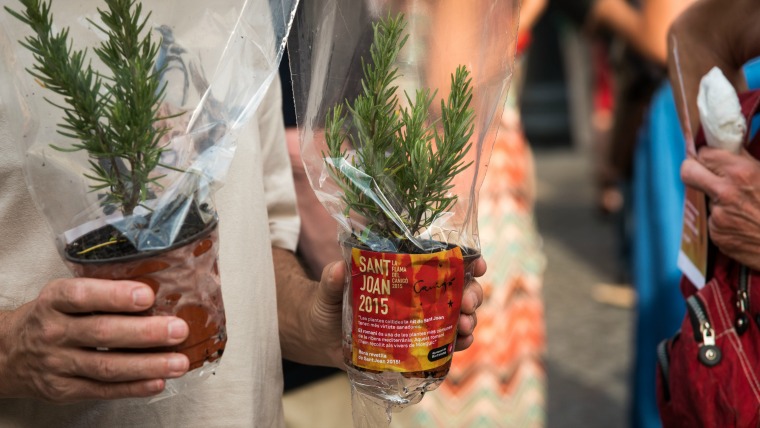The magic of the 'Nit de Sant Joan': spells, ordeals, and the power of herbs and water
The Nit de Sant Joan (St John’s Eve) is a magic night of wonders reserved only for key and important dates in the calendar, such as Christmas and New Year’s Eve. Dates when the sense of beginning, change and the renewal of time is more explicit. Spells, ordeals and formulas have come down to us thanks to the enthusiastic efforts of folklore specialists to collect them at the end of the 19th century.
Ordeals
Some of the most common are related to couples and marriage. It should be said that most of those that have been recorded are performed by single women who want to know certain things about their future husband: if he’ll be rich or poor, as they say, what he’ll look like, etc. And there are all kinds of ways of finding this out: reading the random shapes an egg yoke takes in a glass of water to find out his trade, putting three broad-bean seeds under the bed to discover his economic status or writing the names of her suitors on folded wet paper to see which opens first. And if a girl wants to know what her loved one will look like, she only has to stand naked in front of a mirror at midnight with two candles. The play of light, shadows and reflections will enable her to discern the outline of his face.
Herbs
Vegetation is another key element of St John’s Eve. Herbs, plants, flowers and trees acquire extraordinary properties and potential. Some fall into the medicinal or remedial category, while others firmly belong to the realms of magic. In the past, some remedial herb sellers used the fact they had been collected on St John’s Eve as a catch and a guarantee of their effectiveness. It seems that this had an astronomical basis linked to the hours of sunshine, at their highest at this time of year.
Seven varieties stand out above all on this night: verbena, sage, mugwort, lavender, rosemary, rue and St John’s wort. the latter is particularly effective because this is when its flower has its highest concentration of active ingredients. The flower is used to make an essential oil, oli de cop, aka oli de Sant Joan. It is also believed that fern spores produce gold dust on this night that can only be collected with a white hankie.
Water
On the Nit de Sant Joan, water seems to invite us to reinitiate ourselves. Many customs associated with water are linked to health and good fortune, such as drinking dew at the break of dawn. There are people in mountain areas who roll around stark naked in the grass because it has lots of curative and prophylactic virtues. Taking a dip is another widespread custom: rivers, lakes and the sea are popular places for a ritual immersion. In times gone by people also organised routes to drink water at different fountains. Joan Amades says that the fountain on C/ Avellana in Barcelona, now gone, was very popular. And there were people who washed their clothes on this night because they were convinced that would protect them from bugs and moths all year round.




